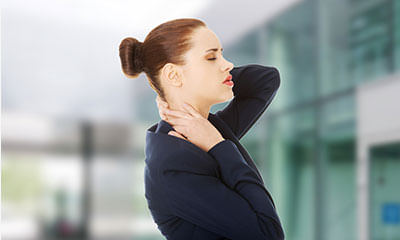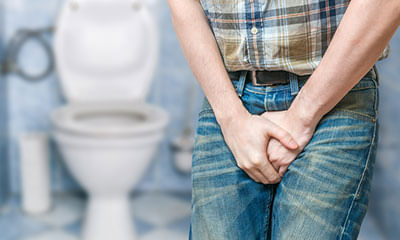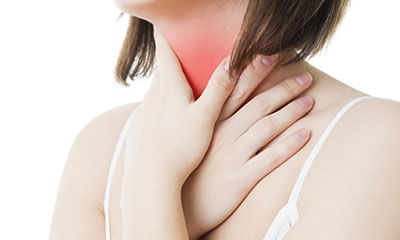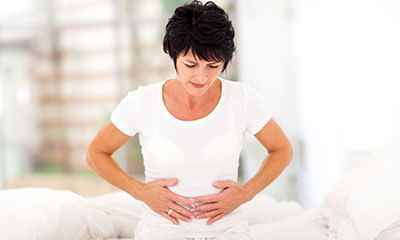Enlarged Thyroid Gland
Sir since some months my mother's neck has swelled, and for that we have visited a doctor and he told to do usg of thyro ...
Ask Free Question
Hi, if you can send all the reports then I can help you better. As per your details it's a suspicious follicular neoplam & further molecular testing is required. Based on that dicision can be taken whether observation or surgery is needed. Can consult with me through private section for detailed discussion & further action.
Common problem is frequency of urination & premature ejaculation. Age 63 years, non diabetic, non hypertensive with mild ...
Ask Free Question
Quick discharge/ premature ejaculation is very common and is usually not associated with any disease but may be due to anxiety, sometimes however there may be problem with prostate gland and thyroid hormone. Most often it is a chronic problem and you have to take medicines off and on. You can learn to control quick discharge by doing this exercise- pull your muscles that you pull at the end of urination for few seconds then release repeat this several times daily. Another is stop-start technique: when you feel that you are going to ejaculate stop the sexual stimulation and divert your mind, the penis will relax, after sometime start the stimulation again and repeat the procedure. Over few months you will gradually increase your ejaculation time. If you want medicine prescription then can ask a paid query/ consult online with me. Otherwise above information should work for you.
Hello doctor! I am a 33 year old female. I have a 2-year-old kid. I am a non-working woman. From the past few months, I ...
Ask Free Question
Check usg abdomen especially to rule out pcod. Please also check thyroid profile report. I can guide you all aspect. Please contact with me on line by paid audio consultation.
Hi, today I noticed I have swelling on both side of my neck near submandibular gland which cannot be seen but I can feel ...
Ask Free Question
I am sorry to hear about your concern but will be happy to assist you. Neck swelling may be due to an infection, injury, or a recent medical procedure. Benign skin conditions can make small areas of the neck appear swollen. Swollen lymph nodes in the neck are a common symptom of many viral and bacterial infections. An enlarged thyroid gland is a known cause of neck swelling in adults. Let's connect over a call so that we can discuss your concern in details and make a suitable treatment plan for you.
My finger tip of index finger in big in size then rest other fingers and my nail in curved downward what is this? ...
Ask Free Question
Clubbing of the fingers, also described as hypertrophic osteoarthropathy (hoa), is an enlargement of the ends of the fingers accompanied by a downward sloping of the nails. You can have primary hoa, which is simply a clubbed appearance of your fingers that is not associated with any health problems. Or you can develop secondary clubbing, which is caused by health problems such as lung cancer and heart disease. 1 clubbing of fingers desherinka / wikimedia commons / cc by-sa 4.0 the clubbing itself is not harmful, but since it can be a sign of disease, it is important that your medical team identifies the cause and that you are treated for your underlying condition. Also known as clubbing is also referred to as clubbed fingers, digital clubbing, watch-glass nails, drumstick fingers, hippocratic fingers, hippocratic nails. Clubbing symptoms verywell/jessica olah symptoms clubbing can involve your fingers and/or toes. It is typically bilateral (affecting both hands and/or feet) and it should be equal in terms of its extent on both sides. If you or your child has primary hoa, then your fingers or toes may naturally appear large, bulging, and rounded. This will be noticeable during childhood or during the teenage years, and it will not change much over time. With primary hoa, other family members are also likely to have finger and/or toe clubbing. 1 secondary clubbing happens gradually, and it causes a change in the appearance of your fingers and/or toes. With secondary clubbing, which is caused by disease, you would also have other features that are not seen in primary clubbing. Features of secondary clubbing include: softening of the nails nail beds that soften and feel spongy nails that seem to "float" instead of being firmly attached to your fingers disappearing of the angle between your nails and cuticle enlargement or bulging of the distal portion of your finger (where your finger meets your nail) warm, red nail beds nails that curve downward and look like the bottom of the round part of a spoon eventually, the nail and skin around the nail may become shiny, and the nail develops ridging. 1 causes primary clubbing is hereditary, and it is passed down via genes. Hereditary clubbing is simply a physical feature, like the color of your eyes or your height. Several genes have been associated with primary clubbing, including the hpgd gene and the slco2a1 gene. 2 secondary clubbing occurs as one of the effects of chronic lung and heart disease. Lung cancer is the most common cause of clubbing. This sign is also associated with a number of other chronic illnesses, including conditions that involve the thyroid gland or the digestive system. 1 there are a number of health risk factors associated with secondary clubbing, including: 3 lung cancer interstitial pulmonary fibrosis lung abscess pulmonary tuberculosis pulmonary lymphoma congestive heart failure infective endocarditis cyanotic congenital heart disease bronchiectasis cystic fibrosis other types of cancer, including liver, gastrointestinal or hodgkin lymphoma inflammatory bowel disease liver cirrhosis gastrointestinal neoplasms celiac disease dysentery graves' disease an overactive thyroid gland how disease affects nail beds the medical conditions that can cause clubbing are generally associated with decreased oxygen levels. Experts suggest that clubbing occurs as your body undergoes changes in response to low oxygen. Several processes affect the nail beds in secondary clubbing. The nail enlargement occurs due to the growth of excess soft tissue beneath the nail beds. The enlargement is associated with inflammation and a proliferation of small blood vessels in the nail beds. 1 a protein called vascular endothelial growth factor stimulates the growth of blood vessels, and this protein is considered a major factor in the physical changes that occur in clubbing. 4 common complications of copd diagnosis clubbing can be subtle, so it may be difficult for you and your medical team to verify this change in your digits. There are a few objective criteria that are used to assess clubbing, and they can help in determining whether you have developed this physical change: lovibond's profile sign: normally, there is a sharp angle between the nail bed and the cuticle. When you have clubbing, the natural angle is lost as the nail angles down instead of up. Distal/interphalangeal depth ratio: the phalanges of your finger are the sections between each bending joint. Your distal phalange, the one that includes your nail, is normally shorter depth-wise than the neighboring phalange. Clubbing is indicated when the opposite is true. Schamroth's sign: the sharp angle between your nail bed and cuticle forms a tiny diamond-shaped hole when you place your hands together with the top of your nails facing each other. When this gap disappears, it is described as schamroth's sign. 4 assessing underlying conditions often, clubbing develops due to a chronic medical condition that was diagnosed years before the clubbing developed. When you start to have clubbing of your digits, your medical team will evaluate you to identify any underlying disease that could be causing it. Even if you have an established lung or heart condition, your medical team will assess your condition to identify any progression that could require an adjustment of your treatment. Tests that you may need in the evaluation of clubbing include: 1 a physical examination to assess for signs such as weight loss, difficulty breathing, skin changes, alterations in your pulse, or altered blood pressure a pulse oximeter to measure your blood oxygen level pulmonary function tests (pfts) arterial blood gas test chest imaging tests, such as chest x-ray or chest computerized tomography (ct) blood tests, including complete blood count (cbc), electrolyte levels, liver function tests (lfts), and/or thyroid tests an electrocardiogram (ekg) or echocardiogram to assess your heart function abdominal imaging tests such as ct or ultrasound a biopsy if there is a concerning lesion noted on an imaging test how lung cancer is diagnosed treatment usually, the abnormal shape and size of the digits do not cause health problems, but any underlying disease that causes clubbing needs to be medically and/or surgically managed, as appropriate. Treatments may prevent your clubbing from worsening and, in rare cases, can reverse some or all of the physical features of clubbing. 1 there are a variety of approaches used to treat the underlying cause of clubbing. Your treatment will depend on your situation. You may need management of respiratory disease, treatment of heart disease, or interventional therapy for cancer. Treatments may include: anti-inflammatory treatment for inflammatory conditions, including some pulmonary and gastrointestinal diseases hormone replacement pacemaker implantation to improve heart function a word from verywell if you notice that your fingers are clubbing, be sure to discuss this with your healthcare provider. Clubbing can be diagnosed in your healthcare provider's office. Although clubbing itself is harmless and doesn't require treatment, it is often as.
I am 30 years old female. My tsh 5.68 and t3 t4 are normal .i just started thyronorm medicine few week ago after that ha ...
Ask Free Question
Dear Ms. lybrate-user, I find that you have only a borderline tsh elevation with normal t3 and t4. I feel that you do not need treatment with thyronorm. If you are overweight go on a strict diet and regular exercise and reduce weight to your ideal body weight (if your height is 160 cm your ideal body weight will be roughly 160-100=60 kg). Recheck your tsh and tpo antibodies after 6 months and we cna then decide
Developed goitre from 3 weeks. After taking calcarea carb 200 for 10 days I did a blood test for thyroid culture. Report ...
Ask Free Question
Goiter doenst go so easily. Itâs already an enlarged gland. So pls consult an endocrinologist or a general surgery consultant so that they will clarify if you would need any surgery for the reduction of goitre.
I have hyperthyroidism. I heard it can cause enlargement problem of heart. I don't face any symptom. But, without a test ...
Ask Free Question
Hi, Lybrate user, •hypothyroidism includes the underlying symptoms: lithargicity with feeling of cold. Hair loss ,brittled nail, dryness of skin, high cholestorol, sexual dysfunction, slow heart rate and weight gain, relax! if you feel no symptoms of cardiac disorder. •you should restric ,intake of cauliflower, kale, spinach, turnips, soybeans, peanuts, linseed, peanuts, millet, cassava, and mustard greens in your dietary regulation. •go for a walk in the morning /evening for 40 mnts. • take ,homoeopathic medicine to check your hypothyroidism, gently, rapidly & safely.@ thyroidinum 3x-4pills, thrice. •tk, plenty of water to hydrate your body. •go for meditation to condition your thyroid gland. •your diet be non-irritant, easily digestible on time. •tk, care.
T3 178 and t4 13.23, tsh <0.001, I have hyperthyroidism. But only when I have gas, I get transient heart flutters which ...
Ask Free Question
Increased heart rate can cause palpitations in hyperthyroidism. This can manifest as "heart flutters" these can be easily managed by treating the hyperthyroidism. Why don't you meet a physician or an endocrinologist?
I have goiter but my thyroid levels are normal. But recently I started gaining weight, fatigue, dry skin, constipation. ...
Ask Free Question
I am sorry to hear about your concern but will be happy to assist you. Having a goiter doesn't necessarily mean that your thyroid gland isn't working normally. Even when it's enlarged, your thyroid may produce normal amounts of hormones. It might also, however, produce too much or too little thyroxine and t-3. Let's connect over a call so that we can discuss your concern in details and make a suitable treatment plan for you.





